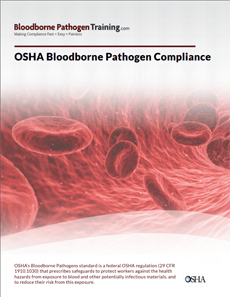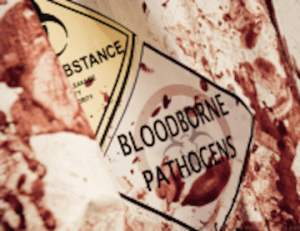Infectious diseases are diseases caused by bacteria and viruses. Bacteria and viruses are pathogens. If they get into your body, they can make you sick. Fortunately, the body has a fantastic immune system to combat these pathogens. This first lesson is about what pathogens are and how the immune system attacks them. The bloodborne pathogens certificate is very important in this case.
Pathogens
Bacteria and viruses and fungi are examples of pathogens. The body tries to keep these out, but there are many openings in our body through which these pathogens can penetrate. Think of all holes in our skin such as eyes, nose, mouth, ears. But also wounds. Bacteria and viruses are very small. Not to be seen with the naked eye. Below you can see a number of images of bacteria and viruses. On the left two plates, you can see various bacteria. As you can see, they all have different forms. What is striking is that the viruses are much smaller than the bacteria. The virus looks a bit like a moon lander. It attaches itself to the bacteria with a chassis.
Bacterial compilation
Bacteria and viruses live all around us. In your book, on your pen, telephone, hair, a keyboard of your PC. So also in your mouth, skin, nose or eyes. Just like people, bacteria love moist, warm places where they can also find something to eat. Bacteria and viruses are transmitted from person to person. Sometimes from animal to human. In other words: if someone has contracted an infectious disease, he or she can infect you with it. He can transfer the pathogen. Transfer always goes through physical contact. Think of giving hands, a kiss or sneeze. Bacteria and viruses live on our hands and in our mouth. Not all bacteria that can infect you are harmful. There are many billions of bacteria in your gut that help you digest the food. We call these bacteria the intestinal flora. Good bacteria are therefore not included in the pathogens.
Infection compilation
But it is also not the case that you immediately get sick from every invaded bacteria or virus. That is because everyone has a fantastic immune system. The immune system is in your entire body and attacks everything that does not belong in the body. The immune system consists of two main players, namely the white blood cells and the substances that make these white blood cells.
The immune system actually works very simply.
The immune system can harm the invaded bacteria or fungus in two ways. The white blood cell can simply eat and digest the bacteria or virus. If eating and digesting fails, the white blood cells have another way to clear up the bacteria and viruses. They produce antibodies against the bacteria or virus. These antibodies then stick to the pathogen and render it harmless. If the bacterium or fungus has been rendered harmless, then it can no longer make you sick.
Participant share film

So, you have already learned a lot about the immune system. But how are things really going now? Below you can see a very short video. You see a white blood cell. This white blood cell does not make antibodies but just eat the pathogen. We call these white blood cells macrophages. You would call them big eaters. The macrophage is the large round object. The worm-like figures that so contradict are pathogens (bacteria). All of this has been enlarged a few thousand times and played at an accelerated speed.

